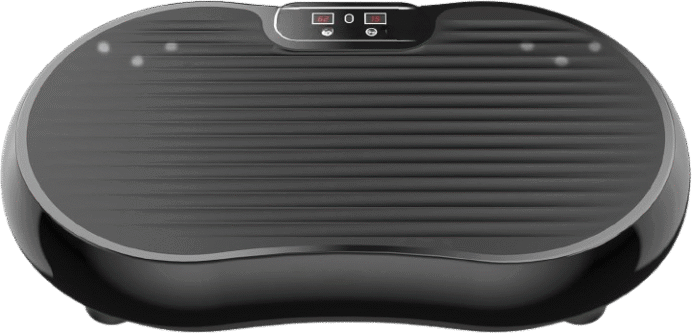The fastest NFL receivers share one supplement protocol that most athletes have never heard of.
It’s not creatine. It’s not a pre-workout. It’s not even on most people’s radar.
Recent research has revealed what pro athletes have known for years: omega-3 fatty acids at higher doses don’t just improve “heart health”—they can enhance your nervous system for explosive speed. Studies show athletes taking high-dose omega-3 supplementation experience measurable improvements in reaction times, agility performance, and movement precision.
Here’s where it gets interesting: football players might have initially started supplementing with high-dose omega-3s to protect themselves from brain injury—but they ended up discovering something unexpected. The same protocols designed for neuroprotection were delivering serious performance upgrades. Faster cuts. Quicker reactions. More explosive acceleration off the line.
Professional football players walk a tightrope most athletes never have to face: peak output under constant collision. And it shows—In 2023, researchers at Boston University looked at the brains of 376 former NFL players and found signs of CTE (chronic traumatic encephalopathy) in about 92% of them. This is the hidden cost of pushing the limits of human performance under sustained physical punishment.
Omega-3s don’t just support neuroprotection—they’re a direct line of defense for the heart and vascular system under high-load conditions. College athletes taking 3g of omega-3s daily (1.75g EPA + 1.1g DHA) for just 8 weeks saw measurable increases in strength and power. Not theory—data.
Yet most football programs still treat omega-3s like a supplement for the injured, not a cornerstone of performance nutrition. The science says otherwise. So do the numbers.
The fastest athletes aren’t just strong—they’re wired for speed. But this isn’t only about explosive power or quick cuts. It’s about building a nervous system that resists aging, stays sharp under pressure, and keeps you performing at your peak for years to come.
Most people are omega-3 deficient and don’t even know it. The typical Western diet creates inflammatory chaos in your system—the exact opposite of what high performance demands.
Your current supplement stack is probably incomplete. That pre-workout blend? It might give you 90 minutes of energy, but is it rewiring your neuromuscular system for long-term performance gains?
Here’s what the science reveals about omega-3 benefits, the effective dosing protocols, and why your current supplementation stack may be incomplete without them.
The Research Foundation: Omega-3s Rewrite Performance Standards
Multiple studies have demonstrated that omega-3 supplementation combined with resistance training produces measurable athletic performance improvements. A systematic review examining omega-3 fatty acids and athletic performance found meaningful improvements in several key areas:
🔥 DOCUMENTED PERFORMANCE GAINS
- Muscular Strength: Significant improvements in resistance training outcomes
- Agility Performance: Enhanced T-test and directional change metrics
- Reaction Time: Faster neuromuscular response patterns
- Explosive Power: Improved power output measurements
- Recovery Markers: Superior inflammatory and antioxidant responses
Research consistently shows that high omega-3 dosing (typically 2,000-3,000mg+ daily of combined EPA/DHA) produces performance benefits that extend far beyond cardiovascular health.
The Neuromuscular Advantage: How Omega-3s Optimize Your Nervous System
Most people think of omega-3s as something for heart health or maybe for protecting the brain after a concussion. But what’s often overlooked is how they actually help your brain talk to your muscles—right at the neuromuscular junction, where speed, strength, and coordination all begin.
EPA DHA Strength Gains: The Membrane Connection
Your muscle cells don’t operate in isolation—they’re surrounded by membranes built from the fats you consume. That’s where EPA (eicosapentaenoic acid) and DHA (docosahexaenoic acid), the two most potent omega-3s, come in.
EPA helps reduce inflammation and supports blood flow—key for muscle recovery and oxygen delivery under load. DHA, on the other hand, is structurally critical. It makes membranes more fluid, which improves how your cells communicate, repair, and contract under stress.
Together, EPA and DHA don’t just improve “health”—they upgrade performance at the cellular level. Stronger signals between neurons and muscle fibers. Better nutrient uptake. Faster recovery. Membranes built from junk fats slow you down. Membranes built from omega-3s make you faster, more explosive, and harder to break.
Research demonstrates that omega-3 fatty acids can improve:
- Neuromuscular transmission efficiency
- Muscle contraction quality
- Cellular energy production
- Protein synthesis rates
Translation: Your central nervous system communicates more effectively, your muscles contract more efficiently, and your energy systems operate more cleanly.
The Anti-Inflammatory Performance Edge
Resistance training creates necessary muscle damage—but excessive inflammation impairs performance and delays recovery. Omega-3s don’t just reduce inflammation; they actively help resolve it through specialized pro-resolving mediators.
Studies show omega-3 supplementation can lead to improved antioxidant status, meaning athletes’ bodies handle training stress more efficiently. Reduced systemic inflammation typically results in:
- Faster recovery between training sessions
- Reduced delayed onset muscle soreness (DOMS)
- Better training frequency tolerance
- Enhanced adaptation to progressive overload
Omega-3 Antioxidant Resistance Training: The Recovery Revolution
Elite performers understand that gains happen during recovery, not during training. Omega-3s can fundamentally improve your body’s recovery processes.
The Antioxidant System Enhancement
Research indicates omega-3 supplementation can significantly improve antioxidant status in athletes. This likely involves enhanced production of the body’s endogenous antioxidant systems.
Improved antioxidant capacity may support:
- Enhanced protein synthesis
- Better mitochondrial function
- Accelerated cellular repair
- Optimized immune recovery
Higher antioxidant capacity means your muscles may spend less energy fighting oxidative stress and more energy building strength and power.
Hormonal Environment Optimization
Omega-3s don’t just provide raw materials for recovery—they may help optimize the hormonal environment for performance. EPA and DHA can influence:
- Inflammatory hormone balance
- Stress response patterns
- Metabolic efficiency
- Anabolic signaling pathways
Poor omega-3 status contributes to chronic low-grade inflammation, which can suppress performance-supporting hormones. Strategic supplementation may address this systematically.
The Dosage Protocol: Evidence-Based Omega-3 Supplementation
Most omega-3 supplements provide 1,000mg or less of combined EPA+DHA. However, research on athletic performance typically uses higher doses.
Evidence suggests:
- Below 1,500mg: Limited performance benefits
- 1,500-2,500mg: Measurable improvements in recovery markers
- 2,500mg+: Significant performance and strength benefits
Effective ratios typically range from 2:1 to 1.5:1 EPA to DHA, mirroring the most successful research protocols for both inflammation management and neuromuscular function.
Timing and Absorption Optimization
For maximum absorption and effectiveness:
- Take with dietary fat (minimum 10g) to enhance absorption
- Consider split doses when using higher amounts daily
- Post-workout timing may support muscle protein synthesis
- Avoid high-fiber meals which can reduce absorption
- Consistency matters – daily intake maintains steady blood levels
Omega-3 Agility Reaction Time: The Athletic Performance Factor
Athletic performance isn’t just about moving heavy weight—it’s about moving efficiently and reactively under varying conditions. Research has revealed improvements in agility and reaction time that extend well beyond traditional strength metrics.
The Power-Speed Connection
Studies indicate omega-3 supplementation doesn’t just improve strength—it can enhance explosive qualities. This suggests omega-3s may benefit both the strength and speed components of power production.
Functionally, this may involve:
- Improved cellular calcium handling for faster contractions
- Enhanced mitochondrial function sustaining power output
- Better neuromuscular coordination optimizing movement patterns
For tactical athletes, martial artists, and competitive lifters, these agility improvements can translate to meaningful real-world performance advantages.
Cognitive Performance Under Physical Stress
The reaction time improvements reveal something crucial: omega-3s may help maintain cognitive function during intense physical stress. Mental sharpness doesn’t decline as dramatically when muscles are under load.
This cognitive-physical integration may explain why omega-3 supplementation shows benefits in:
- Complex movement pattern execution
- Sport-specific skill performance
- Decision-making under fatigue
- Motor learning and skill acquisition
The Cardiovascular Performance Connection
Research participants in omega-3 studies frequently experience improvements in cardiovascular markers—but this isn’t just about long-term health. Cardiovascular efficiency directly impacts athletic performance.
Enhanced Delivery Systems
Improved cardiovascular function supports:
- Better blood flow to working muscles
- Enhanced oxygen transport capacity
- Reduced vascular inflammation
- Improved nutrient delivery to muscle tissue
These cardiovascular improvements support both acute performance and long-term adaptation to training stress.
Real-World Implementation: The Evidence-Based Protocol
Based on current research and clinical evidence, here’s a practical omega-3 protocol for serious athletes:
Phase 1: Foundation Building (Weeks 1-4)
- Dosage: 2,500-3,000mg EPA+DHA daily (approximately 2:1 EPA to DHA ratio)
- Timing: Split into 2 doses with fat-containing meals
- Quality: Third-party tested for purity and concentration
- Monitoring: Track subjective recovery and performance metrics
Phase 2: Performance Assessment (Weeks 5-8)
- Continue base protocol
- Objectively assess performance changes using measurable benchmarks
- Adjust training volume if recovery capacity improves
- Consider bloodwork to assess inflammatory markers
Phase 3: Long-term Optimization
- Maintain 2,000-2,500mg daily for ongoing benefits
- Increase doses during intense training phases
- Prioritize consistent daily intake for stable blood levels
The Competition Factor: Why Most Athletes Miss This Opportunity
Despite substantial research support, most strength athletes remain omega-3 deficient. The typical Western diet provides a 15:1 to 20:1 omega-6 to omega-3 ratio. Research suggests optimal performance may require ratios closer to 4:1 or lower.
This deficiency isn’t theoretical—it may manifest as:
- ✅ Slower recovery between sessions
- ✅ Suboptimal adaptation to training
- ✅ Increased injury susceptibility
- ✅ Compromised power output potential
While competitors focus on exotic supplements with limited research support, you can leverage well-established performance enhancement through strategic omega-3 optimization.
The Bottom Line: Performance Through Evidence-Based Nutrition
Current research on omega-3 supplementation and athletic performance reveals a compelling case for strategic supplementation. Studies consistently demonstrate measurable improvements in:
- ✅ Strength and power output
- ✅ Neuromuscular performance (reaction time, agility)
- ✅ Recovery capacity (antioxidant status, inflammation)
- ✅ Cardiovascular function
- ✅ Training adaptation
The mechanisms are established. The dosing guidelines are clear. The research foundation is solid.
Your Next Move: The Omega-3 Performance Advantage
Start with 2,500-3,000mg daily EPA+DHA from a verified, third-party tested source. Split the dose with fat-containing meals. Track your performance metrics over 8-12 weeks using objective measures.
The science is settled—omega-3s boost athletic performance. The only question is whether you’ll tap into that edge, or keep leaving speed, recovery, and increased focus gains on the table.
Your move.


